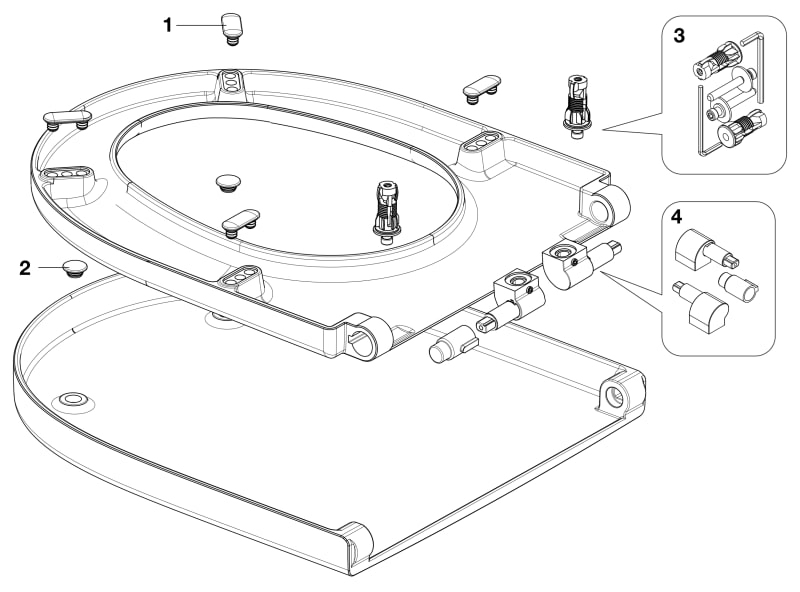The toilet, a ubiquitous fixture in every household, consists of various components working together seamlessly to ensure proper functionality. While many may overlook the importance of toilet lid parts, they play a crucial role in the overall performance and user experience. In this article, we will explore the different components that make up a toilet lid, exploring their functions and significance.
Seat and Cover:
The most visible parts of a toilet lid are the seat and cover. These components provide a comfortable and hygienic surface for users. Toilet seats are typically made from materials like plastic, wood, or thermoset, offering durability and resistance to stains and odors. The cover often hinged to the seat, serves both aesthetic and practical purposes by concealing the bowl when not in use.
Hinges:
Hinges connect the toilet seat and cover to the bowl, enabling them to pivot. These can be made of various materials, including stainless steel, brass, or plastic. High-quality hinges are essential for smooth and durable movement, preventing wobbling or detachment. Some advanced models feature quick-release hinges for easy cleaning and maintenance.
Bumpers:
Toilet seat bumpers are small, discreet components that prevent the seat and cover from slamming onto the bowl. Typically made of rubber or soft materials, these bumpers absorb the impact, reducing noise and preventing damage to both the lid and the bowl. Properly functioning bumpers contribute to a quieter and more user-friendly toilet experience.
Lid Damper: Lid dampers are mechanisms designed to control the closing speed of the toilet lid. These small devices ensure a gradual and controlled descent of the lid, preventing sudden and noisy impacts. Lid dampers enhance safety and minimize wear and tear on the hinges and bumpers, extending the overall lifespan of the toilet lid.
Fastening Hardware:
The fastening hardware includes bolts, nuts, and washers that secure the toilet seat to the bowl. High-quality fasteners are essential for stability and longevity. Some modern toilet lids feature quick-release fasteners, allowing for easy installation and removal without the need for tools.
Material Choices:
Toilet lids come in a variety of materials, each with its own set of advantages. Plastic lids are lightweight and resistant to moisture, while wooden lids offer a classic and warm aesthetic. Thermoset lids, made from a heat-cured resin, combine durability with a smooth, non-porous surface, making them easy to clean and maintain.
Special Features:
Advancements in toilet lid technology have introduced various special features. Some lids include built-in bidet functions, providing a hygienic alternative to traditional toilet paper. Others come equipped with nightlights, seat warmers, or even sensors that automatically open and close the lid based on user proximity.
Conclusion:
The various components of a toilet lid work harmoniously to provide comfort, functionality, and longevity. Understanding these parts allows users to make informed choices when selecting a toilet for their homes. Whether it’s the material, hinges, or special features, each component plays a crucial role in shaping the overall toilet experience. Regular maintenance and choosing quality materials contribute to a durable and efficient toilet lid that stands the test of time.

